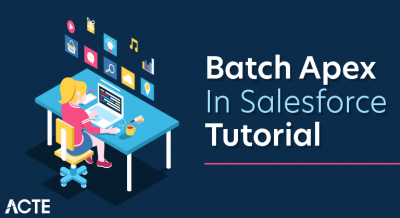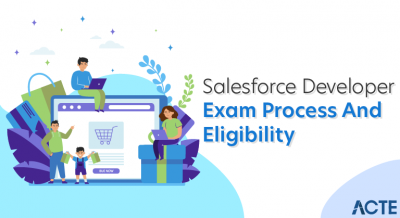
- Introduction to Junction Objects in Salesforce
- Purpose and Importance of Junction Objects
- Creating a Junction Object: Step-by-Step Guide
- Defining Master-Detail Relationships
- Working with Multiple Relationships Using Junction Objects
- Data Modeling with Junction Objects
- Difference Between Junction Objects and Lookup Relationships
- Optimizing Performance with Junction Objects
Introduction to Junction Objects in Salesforce
A Junction Object in Salesforce is a custom object designed specifically to create many-to-many relationships between two standard or custom objects. Salesforce natively supports one-to-many relationships, where one record in a parent object relates to multiple child records, but it does not directly support many-to-many relationships. Junction objects fill this gap by acting as a bridge between two objects, allowing each record in one object to be associated with multiple records in another, and vice versa. To implement this, the junction object contains two master-detail relationships, each linking it to one of the parent objects. This dual connection enables the many-to-many association by storing combinations of records from both parent objects as individual junction records. For example, a junction object can connect Students and Courses so that each student can enroll in multiple courses and each course can have multiple students. Junction objects not only improve data flexibility but also maintain data integrity, as the detail records (junction records) depend on their master records and inherit security and sharing settings. This setup allows organizations to efficiently model complex, real-world relationships and workflows, making junction objects a powerful tool for scalable and effective Salesforce data architecture.
To Earn Your Salesforce Certification, Gain Insights From Leading Data Science Experts And Advance Your Career With ACTE’s Salesforce Training Today!
Purpose and Importance of Junction Objects
Junction objects play a crucial role in Salesforce by enabling many-to-many relationships between two objects, which are essential for accurately modeling complex business scenarios. Unlike simple one-to-many or lookup relationships, many-to-many relationships allow multiple records from one object to be associated with multiple records from another. This capability is vital in situations where relationships are inherently interconnected, such as students enrolled in multiple courses or employees working on several projects simultaneously. The primary purpose of a junction object is to act as an intermediary that holds two master-detail relationships, linking the parent objects and enabling this many-to-many connection. This design ensures data integrity and enforces strong dependency rules, as the junction records cannot exist without the parent records.

It also allows for granular control over sharing and security since junction objects inherit settings from their master objects. Junction objects are important because they facilitate advanced data modeling that reflects real-world relationships, improving the accuracy and usefulness of Salesforce data. They also support features like roll-up summary fields, enabling aggregated data calculations across related records. Overall, junction objects empower organizations to build scalable, flexible Salesforce architectures that support complex workflows, reporting, and automation needs.
Creating a Junction Object: Step-by-Step Guide
- Understand the Purpose: A Junction Object is a custom object that facilitates a many-to-many relationship between two other objects. It contains two master-detail relationships, linking the two parent objects.
- Create a Custom Object: In Setup, navigate to Objects and Fields > Object Manager and click Create to add a new custom object. Name it meaningfully, reflecting its role in connecting the two objects.
- Add Master-Detail Relationships: Create two master-detail relationship fields on the junction object, each linking to one of the parent objects. This establishes the many-to-many relationship.
- Set Field-Level Security and Layouts: Configure field-level security and add the new master-detail fields to page layouts for ease of use.
- Define Record Ownership: The junction object’s ownership is controlled by the master-detail parents. Decide which parent controls sharing and security settings.
- Create Related Lists: On each parent object’s page layout, add related lists for the junction object to display associated records.
- Test the Relationship: Create sample records in both parent objects and then create junction object records to link them. Verify that the many-to-many relationship works correctly in reports and user interfaces.
- Purpose: A master-detail relationship is a strong association between two objects where the detail (child) record’s existence depends on the master (parent) record.
- Ownership and Sharing: In this relationship, the master controls the ownership, sharing, and security settings of the detail records. When the master record is deleted, all related detail records are also deleted.
- Creation Process: To create a master-detail relationship, define a new custom field on the detail object and select “Master-Detail Relationship” as the field type. Then, choose the master object to link.
- Roll-Up Summary Fields: One key advantage is the ability to create roll-up summary fields on the master object, which aggregate data (like counts or sums) from its related detail records.
- Required Field: The master-detail field is always required on the detail record, ensuring that every detail record is linked to a master record.
- Limitations: Each object can have up to two master-detail relationships. Additionally, the master and detail objects must be related in a way that the detail depends on the master.
- Impact on Reporting: Master-detail relationships allow for combined reporting and enhanced data visibility, as detail records inherit the master’s sharing rules.
- Purpose: Junction objects enable many-to-many relationships between two objects, allowing each record in one object to relate to multiple records in another, and vice versa.
- Structure: A junction object is a custom object with two master-detail relationships, each linking it to one of the parent objects involved in the many-to-many relationship.
- Creating the Junction Object: Define the junction object with appropriate fields and set up two master-detail relationship fields connecting it to the parent objects.
- Data Integrity: Because master-detail relationships enforce ownership and cascading delete, junction objects help maintain data integrity by ensuring child records cannot exist without both parent records.
- Reporting and Roll-Up Summaries: Junction objects support roll-up summary fields on both parent objects, enabling aggregation of related records and detailed reporting across the related objects.
- Use Cases: Common examples include connecting Students and Courses, where a student can enroll in many courses, and a course can have many students, or associating Projects and Employees.
- Best Practices: Carefully name junction objects and fields for clarity, and manage page layouts and related lists on parent objects to provide users easy access to associated records.
Would You Like to Know More About Salesforce? Sign Up For Our Salesforce Training Now!
Defining Master-Detail Relationships

Working with Multiple Relationships Using Junction Objects
Working with multiple relationships using junction objects in Salesforce enables the creation of complex many-to-many data models that reflect real-world scenarios. A junction object acts as a bridge between two parent objects by containing two master-detail relationships, allowing each record in one object to relate to multiple records in another. This setup is essential when a simple one-to-many or lookup relationship cannot capture the necessary connections. For example, in a project management system, a junction object can link Employees and Projects, allowing an employee to be assigned to multiple projects and a project to have many employees. Each assignment is represented as a record in the junction object, which stores details like role, start date, or hours worked. When working with multiple relationships, it is important to design the junction object with clear field names and proper data validation to avoid confusion and maintain data quality. Additionally, since junction objects use master-detail relationships, they inherit sharing and security settings from both parents, ensuring consistent data access control. Developers should also optimize performance by writing efficient SOQL queries and using roll-up summary fields sparingly to aggregate related data. Properly configured page layouts and related lists on parent objects improve usability, allowing users to easily view and manage multiple relationships linked through the junction object. This approach supports flexible, scalable data modeling for complex business processes.
Do You Want to Learn More About Salesforce? Get Info From Our Salesforce Training Today!
Data Modeling with Junction Objects
Difference Between Junction Objects and Lookup Relationships
Junction objects and lookup relationships are both ways to relate records in Salesforce, but they serve different purposes and have distinct characteristics. A junction object is a custom object used to create a many-to-many relationship between two other objects. It contains two master-detail relationships, linking each parent object to the junction object. This setup allows a single record from one object to be associated with multiple records of another object and vice versa. Junction objects enforce tight data integrity because the detail records depend on the master records, inheriting sharing and security settings. When a master record is deleted, associated junction records are also removed, maintaining consistency. On the other hand, a lookup relationship is a more flexible and loosely coupled relationship between two objects. It links one object to another without the dependency that master-detail relationships impose. Lookup relationships allow for optional connections, meaning the child record can exist without being linked to a parent. Unlike junction objects, lookup relationships don’t support roll-up summary fields and don’t cascade record deletions. They are ideal for simpler associations where data independence is preferred. In summary, junction objects are specialized for modeling complex many-to-many relationships with strict data integrity, while lookup relationships offer simpler, more flexible one-to-one or one-to-many links without enforcing strong dependencies.
Preparing for a Salesforce Job Interview? Check Out Our Blog on Salesforce Interview Questions and Answers
Optimizing Performance with Junction Objects
Optimizing performance with junction objects in Salesforce requires thoughtful design and best practices to ensure efficient data handling and system responsiveness. Since junction objects establish many-to-many relationships through two master-detail fields, they often involve complex queries and data operations that can impact performance if not managed properly. One key optimization technique is to minimize the number of junction object records retrieved in queries by using selective filters and indexed fields. Leveraging SOQL queries with appropriate WHERE clauses reduces the data volume processed, improving speed. Additionally, avoiding unnecessary joins and using bulkified Apex code helps handle large data sets efficiently without hitting governor limits. Another important practice is to use roll-up summary fields on the master objects wisely. While roll-up summaries provide valuable aggregated data, overusing them or creating deep nested roll-ups can slow down record saves and updates. Instead, consider asynchronous processes or batch jobs for complex calculations. Proper indexing of frequently queried fields on the junction object also enhances query performance. Lastly, carefully plan page layouts and related lists to avoid overwhelming users with excessive related records, which can slow down the user interface. By applying these strategies efficient querying, selective indexing, mindful use of roll-ups, and user-friendly layouts Salesforce admins and developers can optimize junction object performance, ensuring scalable and responsive applications that support business needs effectively.





